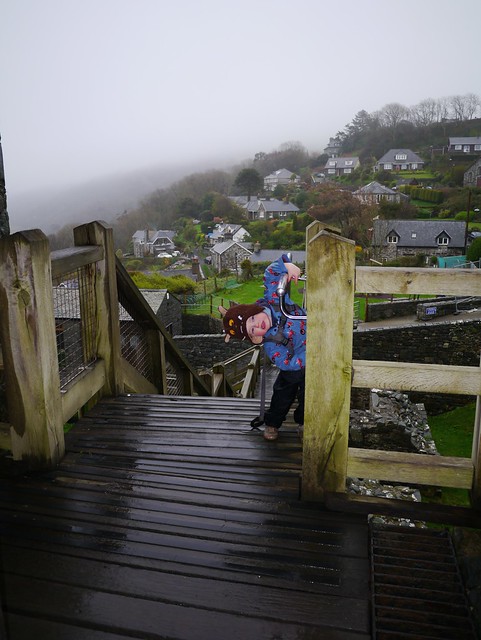Today was one of those days that feel good, as my team and I completed a significant amount of work, and handed it into the regulator responsible. I don’t talk work very often here, but I’m kind of proud of this, so indulge me.
Those of you that know me well, know that while I am an engineer by training I work in health and safety at a high hazard site governed by the Seveso II directive (implemented in the UK as the Control of Major Accident Hazard Regulations 1999, as amended) usually called COMAH. This is a piece of European legislation, designed to minimise the risks to society from the consequences of major accidents and threats to environment.
It came about from major incidents at Flixborough in the UK (large fire and explosion) and Seveso in Italy (Toxic release). It’s not “health and safety gone mad”, as David Cameron and his chums are so fond of ranting on about, but a very serious attempt to protect people and the environment from harm. A recent example of this in the UK was the fire and explosion at Buncefield in 2005, estimated as being the largest fire in Europe since the Second World War. The regulations consider flammability, toxicity and eco-toxicity (potential harm to the environment), and are governed by the Competent Authority (HSE and the various versions of Environment Agency across the UK).
Anyway, the site that I work at became a site covered by the higher requirements of COMAH – an 'upper tier' site – back in 2009, due a planned increase in the levels of 'dangerous substances' under the directive. Becoming upper tier requires you to have on and off-site emergency plans, and to produce a safety report that demonstrates that you meet the stringent requirements of the legislation to take 'all measures necessary' to prevent a major incident. This is more demanding than the usual UK requirement from the Health and Safety at Work, etc. Act 1974 places on an employer. That duty is defined as 'so far as is reasonably practicable', whereas COMAH has the duty of 'as low as is reasonably practicable', a significant advance. But when you are dealing with events that can have a significant affect on society, this makes sense.
Every five years, you have to resubmit the safety report, and that's the milestone we achieved today. Having led the production of the report initially, I can confirm that doing it a second time is no easier. It was a great feeling when we handed it in at the HSE offices in Leeds today, six months, 733 pages and 230,000 words of detailed quantative and qualitative risk assessment later. I was proud of the way that my team had pulled together to make this happen.
Now I guess that it's back to reality!
I do find it bizarre that all through the week we have to drag the seven year old out of bed to go to school, yet at the weekend I get up to find that he has been downstairs playing since around 7am.
He tells me that it is because “there’s lots to do”.
Not that I’ve ever really been away.
Apologies for the silence here, but the last 12 months ending up quite fraught with a large number of complications from work that meant that updating this blog was one of the things that got dropped. That’s not to say that I didn’t write stuff - rather, it never got to the point of being uploaded. Some of that will appear going forward.

I've used an iPad since they were released in the UK back in 2010, and I am convinced that they are not just consumption devices as some people would suggest. However, if you want to do any serious typing then I would recommend getting hold of a Bluetooth keyboard.
I initially started with the Apple Bluetooth keyboard. This is very nice to type on, but not the lightest of devices. However, it met my needs for over a year. Unfortunately, I then managed to drop it onto a hard surface (a concrete floor), and broke it. Although it is built from Aluminium, the tube around the on/off switch can be bent so it cannot work anymore.
I briefly tried a Zagg Keyboard case, but rapidly found it too much of a compromise for my liking. Fortunately, it was an eBay purchase and I passed it onto a friend. I didn't like the keys and the limited positioning for the iPad in the case. It also gave limited protection, and I preferred the combination of a full case for the tablet and separate keyboard.
My next keyboard was a Logitech Tablet keyboard. This is made of plastic, but has satisfying keys to use, and a good pitch. The first one of these lasted 11 months, and then a bank of the keys stopped working. It was replaced promptly by Logitech under the warrantee. The second is still going strong and is always a good option for longer pieces.
Jill had the next keyboard; this was another Zagg one. I can't remember the exact one, but it was an aluminium keyboard with feel like the Apple one, and it clipped into a full case like a folio. It was very impressive, but died a few days close to the year that we'd had it. After several battles with Zagg's customer support interface we finally got hold of a human on the other end and got a warrantee replacement. Unfortunately, this was pretty cheap and nasty, as the model had been replaced with a plasticky one, and there was no option to upgrade to a more robust unit. To say Jill hated this was an understatement. As she uses her iPad much more than me for work as well as pleasure, this was not good.
However, a solution soon presented itself. After three years, I had my second iPad - an iPad mini - and whilst fully functional, the Logitech Tablet keyboard was far too big. I wanted a solution just like Jill's folio.
Belkin were the early movers here. The keyboard folio case was slim, with a finish not unlike the old-school time manager international organisers. However, within 5 months I changed it. "Why?", you ask. Quite simply, it was the non-standard key positions that required an odd combination of keys to be pressed to get an apostrophe. It drove me mad.

I switched to a Logitech Keyboard Folio Case which has great keys and good battery life. It's plastic, but well built. Battery life is good. And more importantly, as you can see from the photo above, it has a normal apostrophe key!
This ended up as Jill's solution too - Logitech soon released one for the full size iPad 2/3/4, in shocking pink and white. Lovely keys and typing action.
And that's were we are now.



